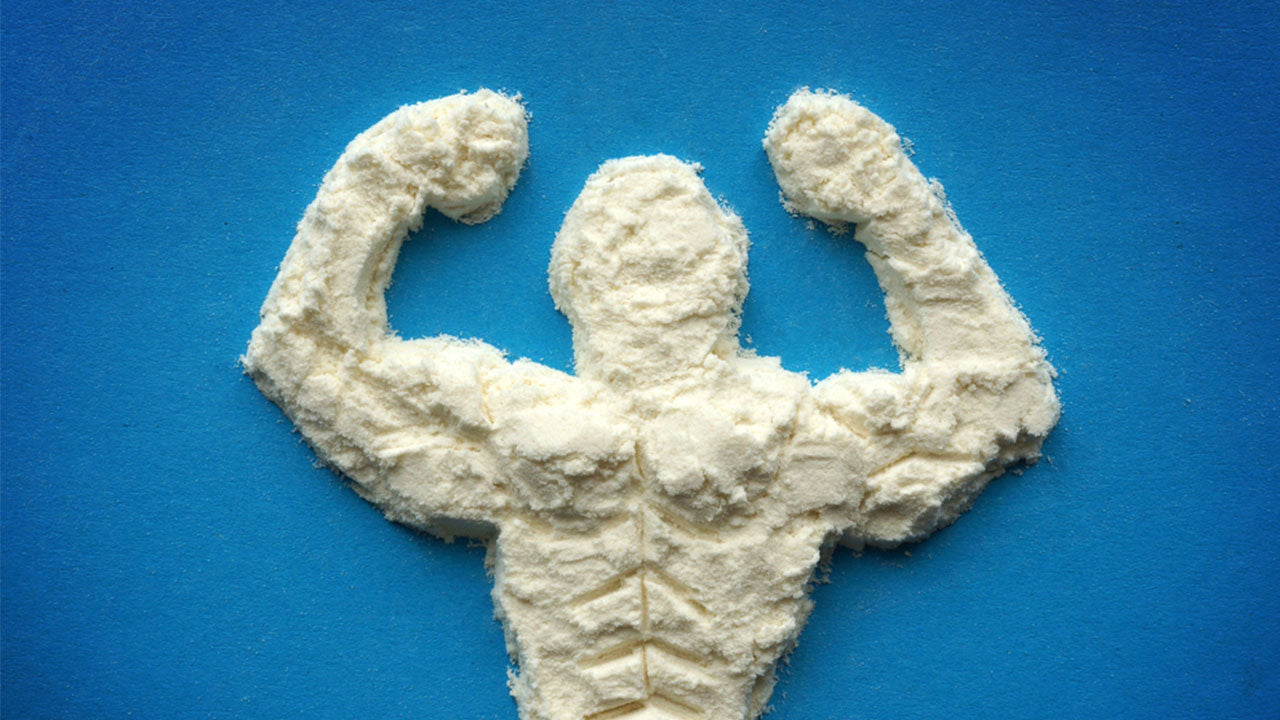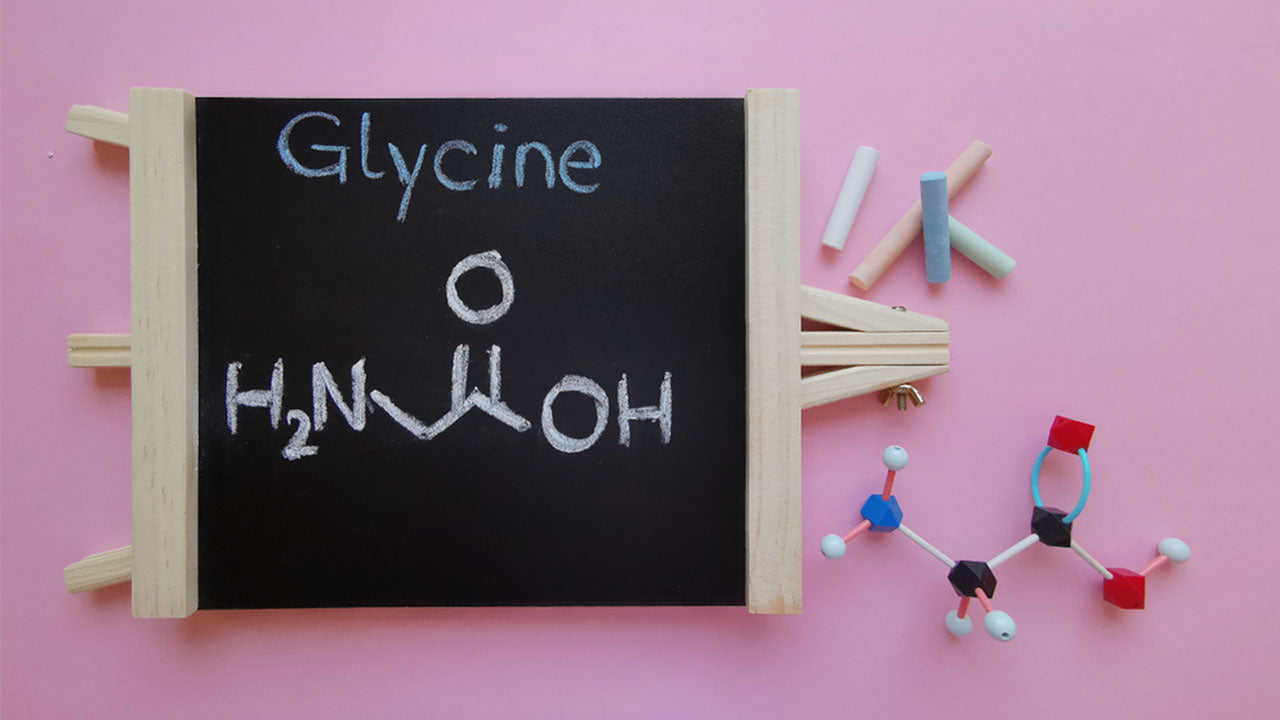How Essential Amino Acids Can Prevent and Even Reverse Age-Related Muscle Loss
 By: by Dr Robert Wolfe
By: by Dr Robert Wolfe

Muscle loss with aging is one of the inescapable characteristics of growing older. While age-related muscle loss is a normal part of the aging process, we can temper its effect with the nutritional support of essential amino acids (EAAs).
It's Never Too Early to Combat Age-Related Muscle Loss
There's nothing wrong with embracing the mentality that 40 is the new 20, but don't fool yourself into believing age is nothing more than a number. Growing older does come with certain physiological changes. Yet there's no reason your golden years can't be every bit as vibrant as your youth. And the sooner you acknowledge how the passage of time influences certain biological processes, the better off you'll be.
As you grow older, age-related muscle loss, which scientists refer to as sarcopenia or age-related sarcopenia, begins to erode your lean muscle mass. This process likely begins earlier than you think. Once you reach the age of 30, you begin to lose between 3% and 8% of your overall muscle mass each decade. The rate of decline increases once you turn 60.
Understanding Anabolic Resistance
Muscle loss with aging occurs because as the years wear on, we lose the ability to make new muscle protein from dietary protein. The impaired ability to build new muscle protein is called anabolic resistance.
When your body enters an anabolic resistant state, it has trouble getting the motor started. The starter for the motor, in this case, is a factor inside the muscle cells called mTOR. mTOR starts the whole process of protein synthesis. The activation of mTOR begins a cascade of responses that ultimately result in the initiation of protein synthesis. Together these responses are called initiation factors.
In aging muscle, the reactivity of mTOR and the other initiation factors is blunted, and this is a basis of anabolic resistance.
The Vicious Cycle of Age-Related Sarcopenia
This ongoing loss of skeletal muscle mass leaves older adults with less control over their bodies. Age-related changes to your muscle tissue and muscle strength don't just influence your ability to excel during a strength-training workout, they also make you more prone to falls and other types of injuries.
Age-related sarcopenia can kick off a vicious cycle: your muscle strength decreases, which limits your ability to carry out physical activity, which causes further muscle loss. Ultimately, this can result in what health care professionals refer to as frailty, a condition that leaves you extra susceptible to external stressors more hearty individuals would be able to navigate with few to no lasting consequences.
Researchers have identified age-related sarcopenia as the primary factor behind the frailty we associate with aging, such as an increased propensity to fall, compounded by a higher likelihood of suffering an injury such as a broken hip due to a fall and the decreased ability to heal in the aftermath of such an injury.
The more frail you become, the greater the impact of each stressor. As the adverse effects of minor illnesses and injuries accumulate, individuals find it more and more challenging to live independently. Increased frailty also heightens the risk of early death.

While that all sounds grim, you have the ability to preserve—and even increase—your muscle mass as you grow older.
Physical activity such as resistance exercise inarguably plays a vital role in preserving muscle mass as you age; however, nutrition has just as strong—if not an even stronger—influence on your ability to preserve and build muscle.
Optimizing Your Nutrient Intake to Combat Muscle Loss
As you may be aware, when it comes to providing your muscle fibers with the optimized nutrition they need to maintain themselves and grow, protein is the macronutrient to prioritize. If you don't provide your body with enough protein, your body will lose the ability to keep up muscle mass and bone density.
Determining your ideal protein intake can be challenging. Studies have shown that many factors affect the quantity of protein your body requires on a daily basis, such as:
- Age
- Gender
- Physical activity habits
- Muscle mass to fat ratio
Keep in mind, too, that your muscle mass to fat ratio differs from your body mass index (BMI). It's entirely possible to be quite thin and still have high levels of fat compared to lean muscle, which increases the likelihood that you'll develop age-related sarcopenia.
According to findings published in Current Opinion in Clinical Nutrition and Metabolic Care, eating between 25 grams and 30 grams of protein with each meal "maximally stimulates muscle protein synthesis in both young and older adults." The authors noted, however, that when elderly subjects consumed protein and carbohydrates together or ate fewer than 20 grams of protein per meal, muscle protein synthesis was blunted.
Choosing the right protein sources will ensure each gram does the most work. When it comes to selecting protein sources, there's one element you should pay the closest attention to: their amino acid content. If you're aging and seeking to combat muscle wasting, you'll benefit the most from increasing your intake of an amino acid called leucine.
Why Leucine Matters So Much
Leucine, an essential amino acid (EAA) called a branched-chain amino acid (BCAA) because of its chemical structure, is one of the most important dietary regulators of mTOR activity. If the proportion of leucine in an essential amino acid mixture is increased to an amount that exceeds its normal contribution to the composition of dietary protein, that EAA supplement can then effectively activate mTOR in aging muscle.
However, leucine alone is not enough. You may have noticed that I did not recommend taking a leucine supplement, but rather an amino acid supplement formulated to contain a higher concentration of leucine. That's because all nine essential amino acids need to be present in the proper proportion to produce new muscle protein.
You can think of leucine as the quarterback of a football team—it may be the pivot point of how the team performs, but without the other players the team is not going to have much success.
How the Other 8 Essential Amino Acids Contribute
When you consume a large amount of the EAA leucine, you increase the rate at which leucine gets broken down since the body is designed to maintain steady levels of EAAs. And since the enzyme that breaks down leucine is also responsible for metabolizing the other two essential BCAAs, valine and isoleucine, they also get broken down at an increased rate. Consequently, the proportions of valine and isoleucine in an EAA formulation containing abundant leucine must also be increased.
Lysine is another EAA with distinct characteristics—it is not transported into muscle as readily as other EAAs are. For this reason, the optimal profile of EAAs to maximally stimulate anabolic-resistant muscle includes proportionately more lysine than is reflected in the composition of muscle protein.
So, even though it may seem logical to provide EAAs for a muscle-building supplement in a profile similar to the makeup of muscle, adjustments can be made to boost the signal and improve delivery of amino acids to overcome the anabolic resistance that results in muscle loss.
The remaining five EAAs—phenylalanine, threonine, methionine, tryptophan, and histidine—also need to be included in a mixture of EAAs to maximally stimulate muscle protein synthesis. In order to include disproportionately high amounts of BCAAs and lysine, however, the proportionate contribution of these additional EAAs must be reduced below what occurs in muscle protein.
There's a precise and proven ratio for protecting against age-related muscle loss, and only one company with the patent: The Amino Company.
You can now get the very proportion of essential amino acids used by me and my research team to stimulate muscle building in aging muscle. It's available as Life, an Active Aging blend that protects against the decline of muscle and heart function. You can learn more about Life here.

The Science Behind How Essential Amino Acids Prevent and Reverse Age-Related Muscle Loss
A wealth of research has been conducted on the link between amino acids and age-related declines in protein metabolism, muscle function, muscle growth, and more.
The scientists behind one study set out to examine how an amino acid mixture enriched with leucine affected muscle protein metabolism in both young and elderly subjects. They found that ingesting the enriched EAA mixture resolved anabolic resistance in elderly subjects. The mixture of EAAs was 3 times more effective at stimulating muscle protein synthesis in older individuals on a gram-per-gram basis than was whey protein isolate, which is a very high-quality protein by traditional means of assessment.
Another study showed that a specifically formulated EAA supplement decreased loss of muscle mass and strength that occurs with bed rest and recovery from hip replacement. This is especially relevant when it comes to preventing muscle loss associated with aging, as older individuals are more likely to experience extended hospitalization and more likely to suffer adverse consequences from the inactivity imposed by hospital stays.
Yet another study demonstrated that daily supplementation with EAAs improved muscle mass and function in healthy, active elderly women. The authors wanted to determine whether essential amino acid supplementation improves post-absorptive muscle protein fractional synthesis rate, lean body mass, muscle strength, and other physiological processes. The randomized, double-blinded, placebo-controlled trial found that ingesting the essential amino acid blend stimulated the muscle protein fractional synthesis rate as well as IGF-1 protein expression. Overall, the authors concluded that EAA supplementation improved lean body mass as well as muscle protein synthesis and that it could be a means of offsetting the "debilitating effects" of age-related sarcopenia.

Key Takeaways to Help You Remain Healthy and Vital as You Age
Experts from across the globe agree that both the loss of muscle mass and the loss of muscle strength are highly prevalent and important risk factors for disability and potential mortality as individuals age. This makes identifying treatments for age-related muscle loss a key priority when it comes not only to improving average life expectancy for older people, but also reducing health care costs and enhancing overall quality of life.
Ensuring an optimal protein intake will form a foundational part of any successful strategy for maintaining muscle mass (and bone density!) as you age. The kind of protein you eat will be just as impactful as the amount. Leucine, an EAA and BCAA found in certain protein sources, makes uniquely significant contributions to the muscle maintenance and growth processes within the human body.
Consuming amino acid supplements designed to contain higher concentrations of leucine (as well as certain other helper amino acids) can dramatically influence your body's ability to retain and increase lean muscle mass as you age. Amino Co's Life is more than 3 times more powerful at stimulating muscle growth and repair than any protein source.
The difference between the effectiveness of EAAs and intact protein cannot be made up just by consuming more of the intact protein, because the optimal profile of EAAs will never be achieved with intact protein. If you're interested in learning more about the advantages of essential amino acid supplements compared to dietary protein sources, this article is an excellent place to start.
And if you'd like a quick takeaway in a nutshell, here it is: when it comes to amino acids for muscle loss with aging, it’s a matter of quality, not quantity.

Up to 25% off Amino
Shop NowTAGS: benefits
Join the Community
Comments (0)
Most Craveable Recipes




 833-264-6620
833-264-6620



















